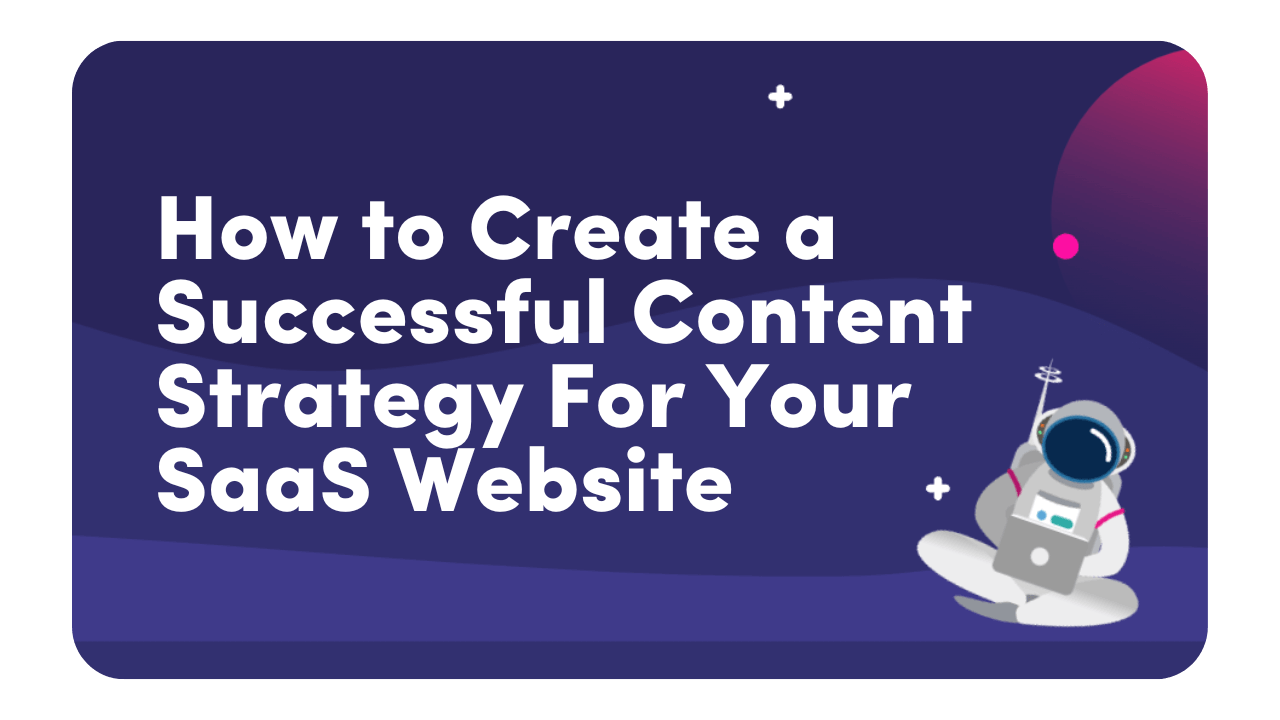Free SaaS marketing strategies & campaign ideas in your inbox every Thursday
Receive actionable SaaS marketing ideas to implement in your business
Insights, Marketing, Web

If you’ve never blogged on your SaaS website before, it can be difficult to know where to even begin. You might come across other SaaS companies’ content online and feel a little intimidated.
You want to come across as an authority in your industry, but what topics should you write about? How can you ensure you’re not wasting your time with blogs nobody wants to read?
These are totally normal thoughts to have when you’re just starting out, but don’t let it deter you!
It’s all about having a solid content strategy in place – long before you even start writing your first blog. A content strategy is important, because it helps you write consistent, quality content that appeals to your target audience and ranks highly online.
Let’s dive deeper into the benefits of blogging for SaaS websites and how you can get started on your very own content strategy today!
Did you know that adding a blog to your SaaS website can increase traffic by as much as 434%? So if you’re wondering “do blogs even work for SaaS brands?” Without question, yes they do. And here’s why:
If your target customers come across a well-written blog you wrote online, it establishes your credibility and positions you as a more trustworthy brand. Why? Because you’re showing off your expertise AND they’ll see you showing up on Google’s search results – adding even more credibility.
Blogging is one of the best ways to improve your overall SEO efforts, increase your online visibility, and get more target customers onto your SaaS website. By writing about topics people are searching for, more people will find you online. Plus, other SaaS websites might share your blog, promoting even more brand awareness!
Blogging is even effective in helping you retain your SaaS customers long after they’ve converted. By creating a knowledge base of SaaS how-to’s, guides, and useful information, you can increase user adoption, help customers get the most out of your SaaS solution, keep them happy, and get them to stay longer/ buy your upsells.
With 77% of internet users reading blogs today, content truly is a foundational component of any B2B marketing strategy. So, how can you create an effective content strategy that will boost your blogging efforts and make sure they weren’t all in vain?
Follow our step-by-step process below to understand the basics.
If you don’t have a clear understanding of who your target audience is and what content appeals to them, you may as well be typing loudly into the void. Figure out the kind of content that will interest your audience, not just what you want to write about.
Content pillars are a set of “topics” that each contain “sub topics” you can write your SaaS blogs about. By knowing what your main content pillars are, you can expand on each topic to answer a ton of user queries. Here is an example:
Content pillar: Cloud-based accounting software
Perform keyword research to see what kind of questions people are asking online that relate to your SaaS product. Then, choose a set of “target” keywords for each content pillar and include them in all your H1s, H2s, H3s, etc., meta descriptions, and throughout your blog’s body copy to help your blog rank on the search results.
Now that you have an idea of what your target SaaS audience are searching for online, have established your content pillars, and target keywords, it’s time to create a content calendar, which includes:
Outline each blog using the above elements and aim to post at least 2 blogs a month at a minimum of 1,000 words. (Each blog should take around 2-4 hours.)
Stick to your content calendar and check in regularly with your Google Analytics to see what blogs performed the best and got the most traffic. Also take a look at where each blog ranks online in Google Search results pages to get insights and improve based on the results.
If you want to build a stronger presence online, nurture target audiences into long-term customers, and achieve a higher conversion rate – blogging is an absolute must for your SaaS website.
While ads can garner quick results, establishing a long-term content strategy will help you appear higher in Google’s search results, bringing an influx of high-quality leads to your SaaS website.
The beauty of SaaS content strategies is that they keep improving over time, take minimal time and money to implement, and add a level of credibility to your brand that other marketing tactics can’t.
Do you need help developing an effective content strategy but don’t have the time?
Let us do it for you! With rolling monthly price plans starting from just £3,000 per month, we join or become your dedicated SaaS marketing and web design partner, taking your online presence to sky-high success with proven content strategies, comprehensive digital marketing, and high-converting websites.
Get in touch with us today to get started.
Receive actionable SaaS marketing ideas to implement in your business




